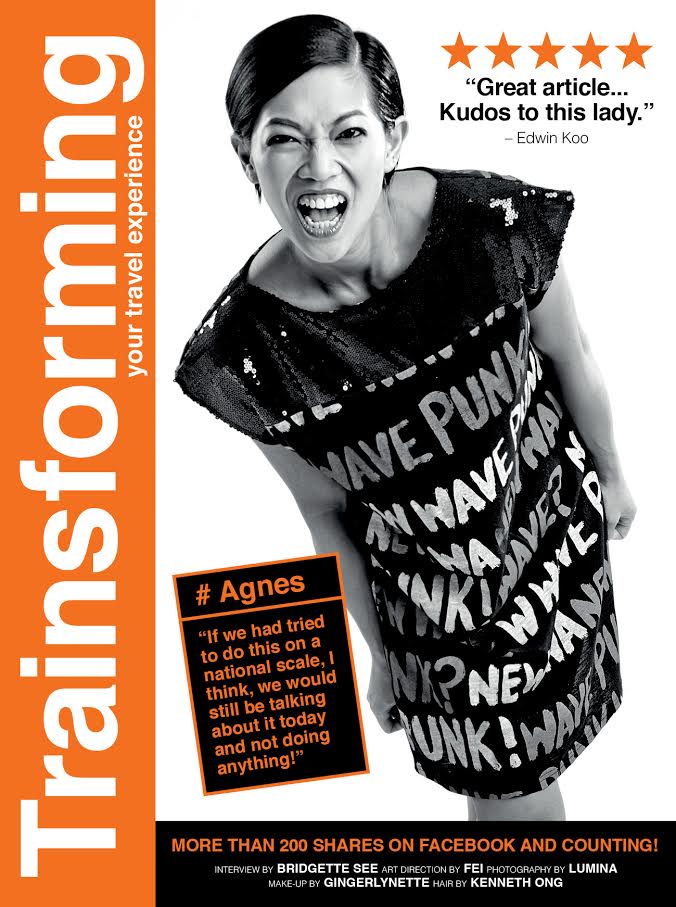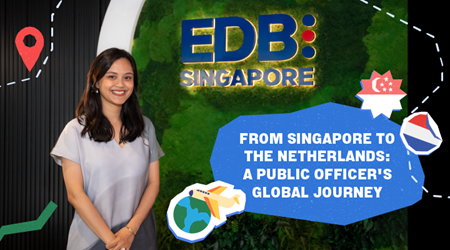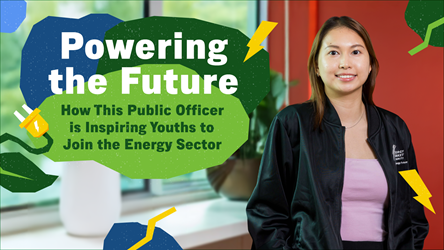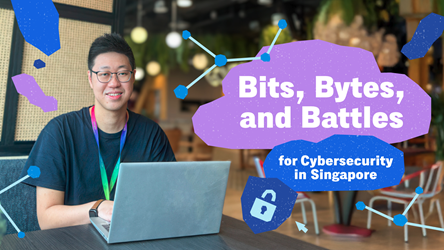Trainsformation: How Design Thinking Can Change Your Commute

I was offered a post-graduate scholarship by the Public Service Division but instead of studying, I chose to do a one-year work attachment at IDEO, a top global design consultancy.
A defining moment at IDEO was when I was involved in a project for the first time. Being the eager beaver civil servant, I went to my team with a 12-point strategy.
I got funny looks from my team members, who said, “We don’t know if those are the answers yet; we’ll figure it out as we go along”, which put me in great discomfort not to have all the answers upfront.
I realised that you shouldn’t assume you have all the answers before you go and discover. You need to have trust in yourself, your team members and your users, that collectively you’ll find the right answers together.
I learnt to Think Big, Start Small: Once we have a big idea, we run small tests to probe and get quick feedback.
We should think of our policies as hypotheses of how the world works. You need to test them, and put out real, tangible experiments so people can tell us if they work. This is evidence- based policymaking.
But this means we engage citizens differently. We have to tell them, “This is what we are thinking about, now we would like you to help us evolve it”, and it could turn out very differently.
I’m trying to do this at LTA, where I head a small team called the Transport Experience Lab, by sharing the tools I picked up at IDEO.
LTA is already addressing the issue of crowding and train breakdowns, but these infrastructural solutions take time. In the meantime, how else can we change the travel experience? This is my team’s work.
The traditional Chinese word for “listen” (聽) is made up of the ear (耳), the eye (目) and the heart (心). The tools I teach require us to use all three senses in order to understand our users – our ears to listen to users’ stories, our eyes to observe behaviours, and our hearts to empathise with their experiences.
One way of listening is to have “deep dive” interviews. To understand mindsets around car ownership, we spoke to extreme cases: families with young kids who deliberately choose not to buy cars. We learnt that the engagement of children on public transport is important to such families. This led us to think: What if we designed public transport to be great for kids?

To observe commuters, we went to six very crowded MRT stations over six mornings. We observed the atmosphere, commuter behaviour, the artefacts they used, and their emotions. We realised that it’s not just about the sheer number of people, it’s also what they are doing. Everyone was expressionless and disengaged. This results in a certain atmosphere for our travel experience!
To empathise with seniors, we put an inter-agency team from the Urban Redevelopment Authority, the Housing & Development Board, the Ministry of National Development and the LTA through an empathy exercise. We tied the officers’ legs together with rubber bands, masked over their spectacles to create blurred vision, and stuffed their ears up. Then we asked them to cross the road. We uncovered underlying emotions such as, “I felt very paiseh (embarrassed in Hokkien) when I walked very slowly.”
Some of these insights resulted in a project team with the SMRT, the Ministry of Transport and the LTA to collaborate on creating an engaging atmosphere for train rides and to nudge behavioural changes through physical redesign.
We launched a football-themed cabin in one cabin, on one train, for two days during the World Cup month. Artificial turf nudged users to the centre of the cabin; red tape on the poles discouraged leaning; and penalty boxes on the floor alerted commuters against blocking the doors.
There were many regulatory barriers but because it was only in one cabin, and there was a team member in it at all times, we showed the regulators that we had sufficient risk mitigation measures and managed to push ahead.
If we had tried to do this on a national scale, I think, we would still be talking about it today and not doing anything!
We took the project from brainstorm to implementation in three months and embedded a lot of principles like “build it out, test it quick and monitor the results”. Again, the idea of Think Big, Start Small.
Let’s not plan, plan, plan on paper and then roll it out on a national scale overnight. Let’s just start small, really fast, and bring an idea to tangibility.
The response on social media included flak like “stupidity”, “don’t waste time” and “focus on getting to the core of the problem”. If we had taken these as the only measure of success, we would have no courage to continue.
But we had feedback data from commuters who actually experienced it. And it was quite different. Through survey cards, we found that we made 80% of the 373 respondents smile! And 50% of people moved into the centre of the cabin. Wow! But we didn’t do as well in keeping people away from the doors.
Together with qualitative comments, we found sufficient confidence that we should pursue this. The cabin was especially popular with children, which comes back to addressing one of our insights from our deep dives with families.
Today we’re all designing our public services as one-size-fits-all. The themed cabin made us see an opportunity of evolving these services in future. How do we design cabins for different needs?
We need a paradigm shift for the public transport network to move from being a public network transit to being a huge shared social space where we build shared experiences as a country and community. So how would you design for that?
This means, as an organisation, we will need a portfolio of approaches: we need core strengths in infrastructure, engineering and regulation, but we also need design. So we need to start to build such approaches.
I see next year as a year of more experiments and data gathering so that we continue to grow in evidence and confidence. Hopefully, some of these will gain traction and get implemented at scale.
When we share these tools and approaches, it resonates a lot with officers and you can see a spark in their eyes. Fundamentally, this brings us back to the core of why we serve, which is to make things better for citizens. And that gives me wind in my sails to power on.
- POSTED ON
Nov 26, 2014
- TEXT BY
Bridgette See
- PHOTOS BY
Lumina
- ART DIRECTION BY
Fei
Makeup by GingerLynette
Hair by Kenneth Ong









